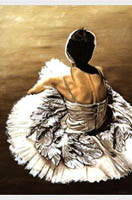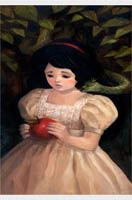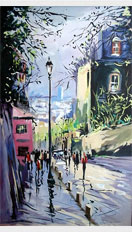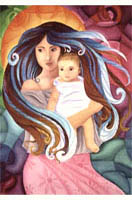Francesco del Cossa
Francesco del Cossa (c. 1430 in Ferrara, Italy – c. 1477 in Bologna, Italy) was an Italian painter of the school of Ferrara. He is known to have been the son of a stonemason in Ferrara. Although little is known about his early works it is known that he left Ferrara in his late twenties or early thirties.
Cossa is noted especially for his fresco work. One of the first records we have of him is in 1456 when he was an assistant to his father, Cristofano del Cossa, at that time employed in painting the carvings and statues on the high altar in the chapel of the bishop's palace at Ferrara.
Cossa after this worked in conjunction with Cosmè Tura, decorating the summer retreat known as the Schifanoia, and of the frescoes which remain, three can be safely ascribed to him. They illustrate the manners and dress of the period and are rich in architectural details, somewhat less decorative and less fantastic than those of Tura, but stronger and grander than the latter's work.
Unhappy that he had been paid by the square foot for his work for Duke Borso, Cossa left Ferrara for Bologna in 1470, complaining he was being paid the same as the "worst dauber in Ferrara." In Bologna he obtained many commissions under the Bentivoglio. Here he painted his two masterpieces, one, the Virgin and Child with two saints and a portrait of Alberto de'Catanei, produced in 1474; the other, the fresco of the Madonna del Baracano, representing the Virgin and Child with the portraits of Giovanni Bentivoglio and Maria Vinziguerra, painted in 1472. In these works Cossa reveals himself as a painter of great power and originality, stately in his conceptions, grand and massive in portraiture, broad in modelling, simple and severe in composition.
In the National Gallery there is a picture by him representing St. Vincent Ferrer, an "Annunciation", in the Dresden collection, which has been attributed to Pollajuolo, and a fine profile portrait at Locko Park near Derby, said to represent Duke Ercole I of Ferrara. He executed some stained glass windows in Bologna, the best of which is a beautiful circular window, in the church of San Giovanni in Monte, representing St. John in Patmos; this bears his signature.







